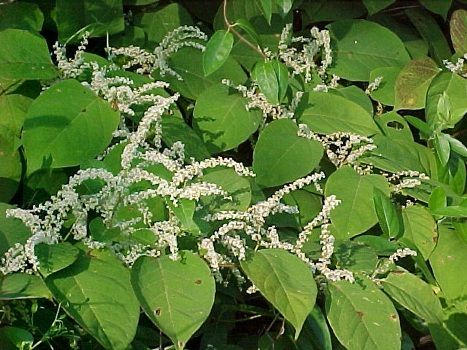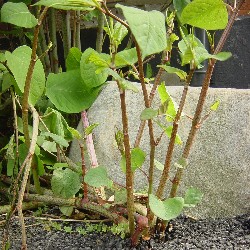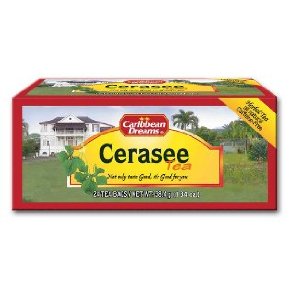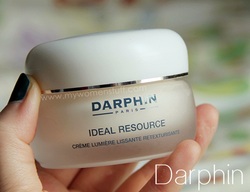Japanese Knotweed medicinal properties were brought to the United States from eastern Asia. One of the first uses of Japanese Knotweed here in the U.S. was as a landscaping material for many of the New York and Massachusetts public buildings. Unfortunately, they didn’t anticipate its rapid growth and has since then become a nuisance plant – listed on many of the “invasive plants lists”.
If you’re not familiar with it, its stalk looks a bit like giant asparagus with the reddish qualities of rhubarb. As it grows it takes on a more woody, bamboo look with triangular pointed leaves and little white flowers.
In traditional Chinese medicine Japanese Knotweed is used in many ways to treat a huge variation of ailments. While no single medicine can cure everything, antioxidants sure can do a lot. And Japanese Knotweed is one of the biggest producers of antioxidants which is why it’s good for so many things.
You’ve probably heard me talk about resveratrol from time to time, well this invasive Japanese Knotweed plant is a tremendous source of this fantastic antioxidant, resveratrol. So if you’re interested in Japanese Knotweed medicinal properties, let me share some with you.
Lowering High Cholesterol

There is an herb in China that goes by the name Hu Chang that has been used to lower high cholesterol for centuries. It’s English name is Japanese Knotweed. Polydatin, one of the nutrients in Japanese Knotweed (aka Hu Chang) has been shown to lower lipids in hamsters and rabbits.
I haven’t seen a single human study using just polydatin to prove this however. The trials I have come across are based on a J. Knotweed supplement, with the theory that polydatin is the reason for the cholesterol lowering effects. But honestly it could be any of the Japanese Knotweed medicinal properties.
It could be the resveratrol.
Preventing Cancer
There have been some great studies showing a connection between resveratrol and cancer prevention. Since J. Knotweed also contains emodin and chrysophanol, it’s really a super-charged cancer fighter.
In a 2001 study resveratrol was found to reduce tumor volume and weight in mice. And emodin and chrysophanol were shown to exhibit antimutagenic properties. (That means in the presence of these two nutrients fewer cells mutated. Since mutations are often the beginning of the road to cancer, they’re like cancer preventers.)
In a 2009 study high doses of resveratrol slowed breast cancer mestatis in humans. The language in the study was a bit too medical for me to understand every word however. But the study concluded that “this property of resveratrol makes it a potential preventative agent of breast cancer”.
Unfortunately, I’ve yet to hear Barbara Walters interview someone who was cured of cancer because they ate Japanese Knotweed. So studies are just studies. But the signs are good.
Until there are some proven human studies however, I don’t think you can label the Japanese Knotweed medicinal properties as Cancer Preventers yet.
Healing Burns
When I think of skin lesions or burns, I typically think of Aloe. The Chinese don’t. They go back to their tried and true Hu Chang. Used externally, one of the Japanese Knotweed medicinal properties is healing skin problems.
Think about all the things you want on your skin when you have a burn like astringement, antimicrobial, anti-inflammatory, antipyretic and analgesic. These are all properties of the antioxidants in J. Knotweed.
Because of that Hu Chang is used in many skin crèmes in Asia. The Darphin company (pictured) uses it in their creams as well.
There are a great number of medicinal recipes using Japanese Knotweed. In fact several “wild” cookbooks have sections on it. Since it does taste a bit like rhubarb, many substitute in their recipes.
We’ve got a recipe for Itadori Tea (Itadori is Japanese Knotweed) and a few other goodies. (So if you’re up for more of Japanese Knotweed Medicinal Properties information, click here)
A Little Bit Deeper Research
There is so much to learn in the world of resveratrol, antioxidants, superfoods and wine. This is the place to start, no matter what, if you indeed are looking to maximize your health and live longer.
 |
Japanese Knotweed: Invasive Plant or Healthy Tea? J. Knotweed is a lot of different things to different people. To much of the United States, it is an invasive weed like Kudzu. |
 |
Jamaican Cerasse Tea Jamaican Cerasse Tea, also called Jamaican Bush Tea, is an herbal tea considered to be a blood purifier and a way to control sugar for people with diabetes. |
